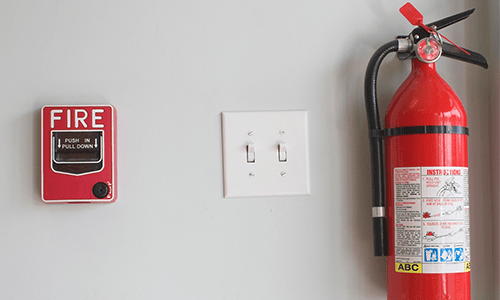Congratulations! You’ve been elected as a member of your community association’s board of directors. Now what? Serving as a member of an association’s board of directors puts you in a powerful seat while also conferring a great deal of shared responsibility. Don’t let this scare you! With some preparation and teamwork your term as a member of the board will be an enjoyable and rewarding experience.
Understanding How a Board Operates & Your Role On It
Community association boards of directors are comprised of owner members of the community, each with a unique perspective, working toward a common goal. Communities are best served when their elected leaders have a firm understanding of the roles and responsibilities they have undertaken, and how said parties best work together.
The board of directors governs the community, by acting on behalf of its members. To best work on the behalf of the community, it is in the interest of every board member (new and returning) to review the governing documents of the association. An association’s governing documents provide a roadmap for decision making, operations, funding, and protecting the value of the property. Those documents include, in order of significance:
- Federal, State and Local Law and Statue(s)
- The unique documents that bind a community association to its owners:
- Recorded Map, Plat, or Plan
- Declaration
- Articles of Incorporation
- Bylaws
- Board Resolutions (also known as the Rules and Regulations)
Owners, and board members especially, should review the above documents so they can reference as needed. You may be surprised how often you’ll reference these important copies during your ownership tenure!
In addition to the governing documents of an association, each board member should become familiar with the responsibilities of their position within the board. All boards have three primary officers, at minimum: a President, Treasurer, and Secretary.
The President serves as the Chief Executive Officer of the association. Further, she/he presides over meetings, works with other board members to establish goals for the association, oversees the association business, and is responsible for the fiscal well-being of the organization.
The Treasurer maintains the finances of the association. This includes monitoring the progress of the annual audit and tax return , acting as a liaison to the association’s auditor, developing the annual budget (in conjunction with the community manager), and executing against the reserve study to ensure adequate funding.
The Secretary is tasked with preserving the official records of the association and ensuring all decisions of the board are captured within the meeting minutes. Further, she/he may witness and verify signatures on legal documents, accept and verify proxies for annual or special meetings, and file any necessary forms with the state.
Outside of the officer positions listed above, some associations may also have a Vice President, Recording Secretary, and other specifically identified roles. Members of the board of directors without specific titles are known as Members at Large or simply Directors or Managers. This designation is for those elected or appointed to represent the whole membership of the body. Their responsibilities include attending meetings, serving as a liaison to owners, working with various committees, and voting on items presented on the board meeting agendas while exercising their fiduciary duty to the association.
Regardless of the title of the board member, each participant has a Fiduciary Duty to the association. This duty states the board members are bound, under state law, to act within their authority, to exercise due care and to act in good faith, taking into account the association’s best interest. A strong board member removes their personal interests from the decision making process and reviews contracts, votes, and conducts association business always with the best interest of the association in mind.
Tips to Successful Contributions as a Board Member
Board members bring a variety of interests, experiences, agendas, and perspectives to their service on the board. All these differences contribute to the diversity of your organization—adding to the depth and perspective. However, all board members can find success by following the guidelines below.
-
- Understand your role on the board. You may be elected or appointed to a specific position, or participate as a Member at Large, but identify the responsibilities of your position and ensure you are actively working to accomplish them.
- Work cooperatively with your fellow board members. With a variety of personalities and personal agendas, sometimes this is the hardest goal to achieve! Learn each other’s strengths, insights, specialized skills and appreciate how these can contribute to the success of the group.
- Communicate effectively. Either in person, or when utilizing technology, pay attention to the tone and message of your communications. Debate and dialogue will play an important part of your service as a board member—often to the benefit of your organization! However, also remember that respect and consideration should always be a central component of all communications.
- Ask Questions. No one expects you to be an expert on façade restoration or complicated plumbing issues, but you will be obligated to make important decisions for the association on these matters. Learning as much as you are able, so that you may make informed decisions will be an essential part of the process. Prepare a list of questions to send to your community manager and set a reasonable time for a response.
- Work WITH your Community Manager. Your community manager is a trained and certified resource for you and other board members. Build your relationship with your community manager, set clear (and realistic) expectations, communicate, and find a path towards a mutually beneficial relationship.
- Prepare for meetings. Read your board packet, prepare your questions in advance (possibly even sending them to the other board members or community manager in advance, should research be needed), understand vendor reports and proposals and be ready to state your positions on the issues and vote as needed.
- Listen. Board members serve their community first; so listen to your owners, their concerns and desires. Ensure your actions as a board member serve the best interest of the owners, and the association.
- Breathe. When in doubt, take a step back and breathe. Everything will be OK! You’ve got this!
Your entry to the world of board service may leave you a little breathless, just like when you’re suddenly caught in a game of tag – and now you’re it! Stop running, take a deep breath, and follow these tips so you can prepare for a term of service as a conscientious and outstanding board member contributing to your community in the best possible way.
Katy Casserly, CMCA





 Rachel Kegley
Rachel Kegley 
 Fred Schroeder
Fred Schroeder 

